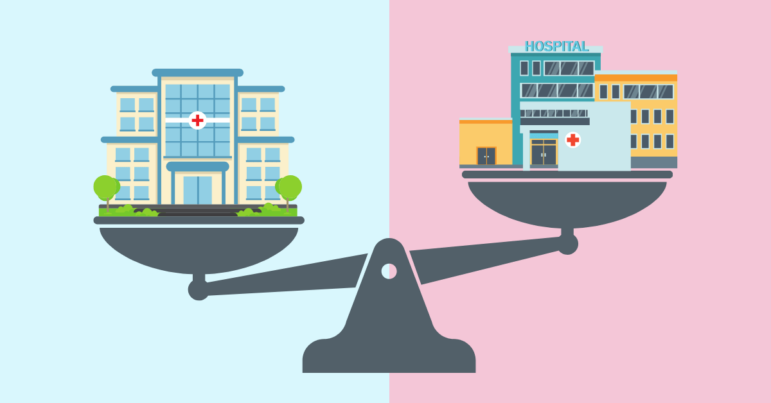When HCA, the nation’s largest for-profit hospital system, made plans to reduce services at one San Jose, CA hospital while pursuing a major expansion at another in a wealthier part of the city, they were criticized for putting profits over patients. Activists took to the streets warning that the move to downgrade care at Regional Medical Center would hurt patients and increase pressure on an already strained county hospital system.
According to the Lown Hospitals Index, Regional Medical Center does look like a hospital doing a good job at serving its community. It ranks 74th in the nation for Inclusivity, meaning it’s excellent at serving patients of color and lower incomes. Good Samaritan, the hospital in the wealthier part of the city, comes in at 2,204. And while Regional earns a “B” in Community Benefit on the Lown Index, Good Samaritan earns a “D” due to its relatively low spending on financial assistance and limited service to patients using Medicaid plans.
Although an agreement has now been reached to sell Regional Medical Center to the county in a $175 million deal, the expansion efforts at Good Samaritan continue to generate controversy. The planning commission recently recommended that the city deny a rezoning request related to the hospital’s expansion, with one official saying, “…when you divest from communities because you’re no longer profitable, you provide significant harm to communities that have become dependent on your service.”
“This shouldn’t be a tale of two hospitals,” San Jose Councilmember Peter Ortiz said. “There shouldn’t be an East Side San Jose hospital reality and a west side San Jose hospital reality. We should have one medical system that serves our entire city equally.”
–Mercury news
In a socially responsible system, one would expect investment to be prioritized for hospitals serving communities with the greatest health needs. That means communities with lower incomes, higher rates of chronic disease, and lower life expectancies would be seeing regular improvements to the health infrastructure in their neighborhoods. But that’s not the pattern we see in many places. Instead, we see scenarios similar to San Jose all over the country.
Atlanta, GA
In 2022, Wellstar Health System announced plans to close their Atlanta hospital with only two months warning. The safety net institution ranked as one of the most inclusive in the state by the Lown Hospitals Index, and its generous financial assistance policy helped many low income residents access care. Given its importance to the city, the closing generated outrage among some citizens and community leaders, and even led the local NAACP to file federal complaints with the Office of Civil Rights. Wellstar maintained that the hospital was operating at a loss and that it simply was not financially viable to keep the doors open.
New York City, NY
Earlier this year, Dr. Uché Blackstock wrote about New York City’s two-tiered hospital system, relating her experiences as a physician at Tisch, a private NYU hospital, and Bellevue, a public hospital affiliated with the medical school and located in the same neighborhood. While Tisch saw relatively wealthy and privately insured patients who were able to access efficient, effective, and proactive care, Bellevue saw a much higher percentage of uninsured patients, many of whom faced health problems that were more complex and rooted in social determinants. She describes a segregated system where unspoken rules saw patients directed to the better resourced hospital if they were wealthier, and to the less resourced hospital if they were not.
Richmond, VA
According to a 2022 New York Times investigation, Bon Secours Mercy Health made millions in profit off of 340B discounts from Richmond Community Hospital, which serves mostly Black patients from lower-income neighborhoods. But rather than reinvesting in that hospital, the funds were directed to improve other hospitals serving wealthier and whiter communities. Meanwhile, Richmond Community Hospital had its intensive care unit closed, lacked a maternity ward, and struggled to keep basic equipment like its MRI machine in working order. One doctor described the stripped-down hospital as having become a “glorified emergency room.”
San Jose, Atlanta, New York, and Richmond are not isolated examples. Similar scenarios are playing out at safety net hospitals across the nation. As long as health systems lack incentives that outweigh their fear of financial risk, communities where people are most in need are likely to suffer the consequences. To be clear, that means people of lower means who lack private insurance, and who are disproportionately people of color, will be directed to a second class system.
